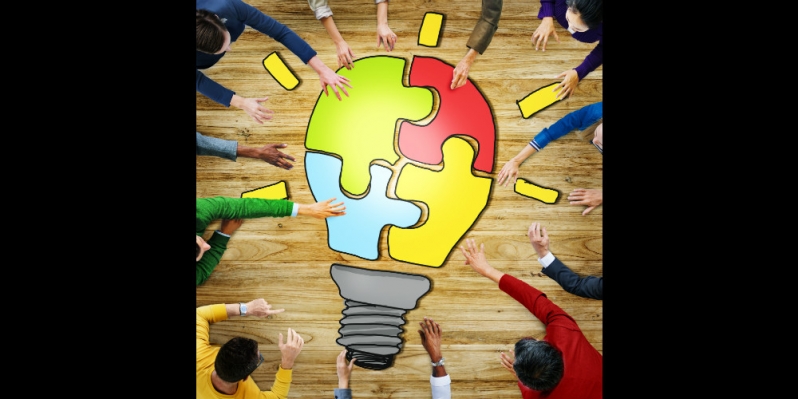We all have a creative streak in us, and the right work environment can help us bring it to the surface. But there are several common misconceptions about how office design can promote creative thinking and innovation. Falling into these traps can lead to creating workplaces which may look impressive but in fact suppress breakthrough ideas.
Myth 1: ‘All we need is a creative looking workplace’
Making a workplace look creative does help people generate more original ideas, but by itself is not enough to make a workplace innovative. It’s a common mistake to blindly copy the features of the most popular offices like Google’s and Pixar’s themed meeting rooms and spectacular social facilities. An office design that delivers great results for one organisation will not necessarily get the same results for another. This is because what is considered a breakthrough idea and what boosts people’s creative juices vary in each company. So your workplace should reflect the unique attributes of your organisation: its purpose, values, culture and brand. It should support your people’s way of working and resonate with their identity. Once you have thought through these fundamentals, then it’s time to think about how to create a workspace that will draw out those ideas that could transform your business.
Myth 2: ‘We have an innovation room, people can go there and innovate’
Creativity, which leads to innovation, is not just one thing. Business innovation strategies vary, but they all grow out of diversity: the combination of different activities, ways of thinking, skills and personalities. So the work environment needs to be diverse. It needs to accommodate teamwork as well as individual focused work. (In fact, without people being able to focus, collaboration becomes fruitless.) It needs to encourage dynamic conversations as well as contemplation, boundless exploration as well as critical thinking. Different interior features (such as colours, lighting, furniture, technology, level of privacy, room size, sound levels) support different types of activities and ways of thinking, and these should be carefully selected to enhance each part of the creative process.
Myth 3: ‘Creative ideas only come from the head’
Wrong. We need to use our bodies more! Good posture, physical movement and exercise are key to optimal brain function. Furthermore, when we engage our whole bodies in a work activity, we think differently and connect with our work better than just sitting and thinking about a problem. Unfortunately, knowledge workers spend almost all their working hours sitting, whether on an office chair, on a couch in the break room, or on a stool at the dining table. Allocating a seat to pretty much every work activity is still the default in workplace design (which, by the way, is not a very creative approach). Standing desks and treadmill desks are becoming increasingly common, but the change is slow, and there is more you can do. To maximise your people’s talent, provide space for physically engaging activities like writing and drawing freehand, using whiteboards, or crafting models and prototypes.
Myth 4: ‘We’ve created a creative office, we’ve now done it’
When we walk into a spectacular, picture perfect office we may be really impressed at first, but the initial high will inevitably wear off after a while. Furthermore, spaces that look polished and final hinder creativity. People not only feel that they cannot create a mess (which is part of the creative process), but it also gives them the sense that it is not acceptable to have their ideas unfinished. In such spaces people tend to lock in ideas too early and come up with ‘safe’ solutions. In contrast, in spaces that are somewhat scruffy, and where things are non-precious and easy to move around, people are more willing to take risks and experiment with untested ideas. A creative environment is never finished. You need keep things in motion, make regular changes to keep it current and fresh.
Innovation starts with putting together some puzzle pieces in a way they haven’t been done before. When it comes to creating the right environment for that, you have many pieces to play with: the physical space, the unique attributes of your organisation and your teams, your people’s bodies and minds, and the way things change over time. And these should all form one big impressive picture.


One Response